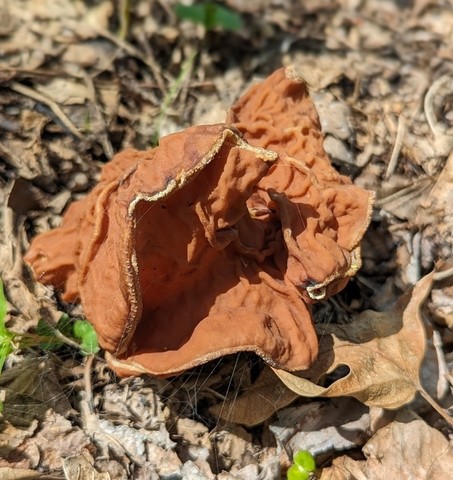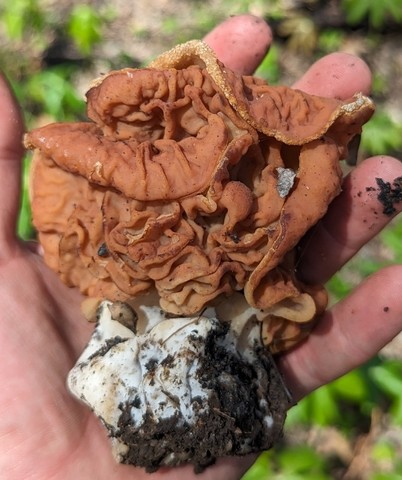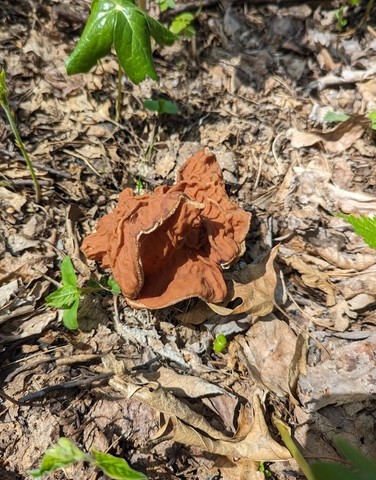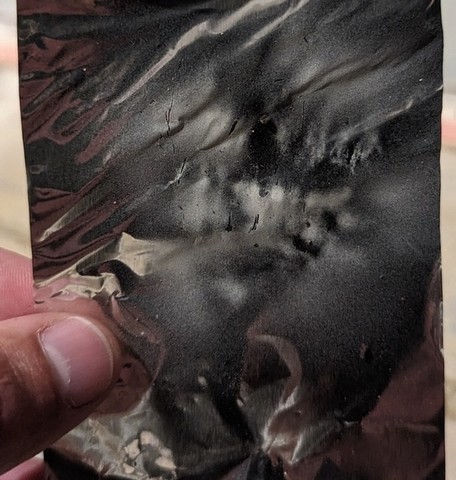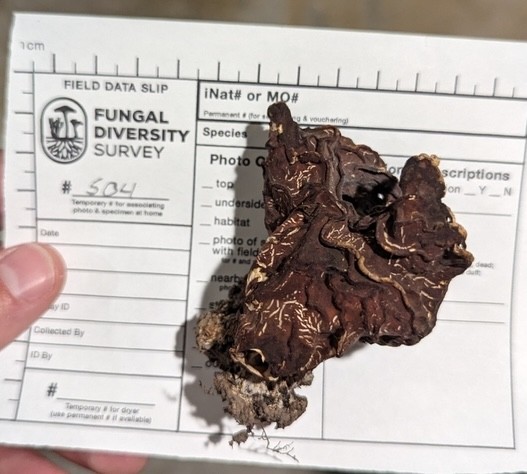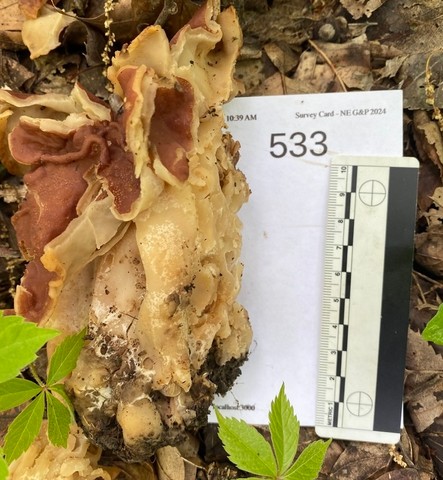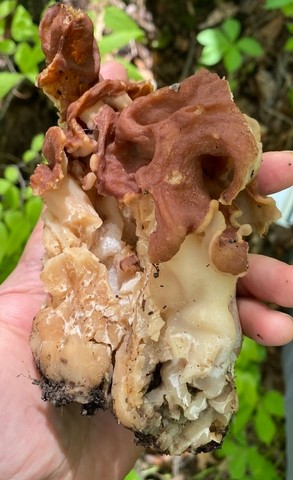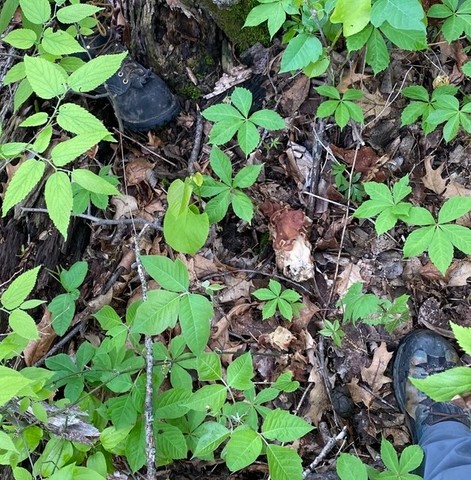Red False Morel
Neogyromitra brunnea
Life > Fungi > Ascomycota > Pezizomycotina > Pezizomycetes > Pezizomycetidae > Pezizales > Discinaceae > Neogyromitra
Description
Neogyromitra brunnea is a saprobic and mycorrhizal mushroom that can be found in spring-time forest settings under hardwoods. It can be found growing from the soil and well-decomposed stumps.
A field test for this mushroom is to slice it in half. If the inside is brain-like, the features lean more towards a False Morel like Neogyromitra rather than the True Morels (Morcella) which are hollow on the inside.
This mushroom should not be eaten. It contains a toxin call Gyromitrin that breaks down into what NASA uses as rocket fuel: monomethylhydrazine (MMH). It's highly toxic, carcinogenic, and easily evaporates into toxic fumes when cooking. Though some people still eat this mushroom as a delicacy, proper cooking requires a fume hood, many cycles of boiling and discarding water, and cultural experience to keep things safe.
Below are the effects of "Gyromitrin syndrome" defined by the North American Mycological Association:
"Symptoms appear within 2 to 24 hours and include headaches, abdominal distress, severe diarrhea, and vomiting. In severe cases, liver, kidney, and red blood cell damage may occur, possibly resulting in death. Treatment is largely supportive, and a physician should be consulted." (Beug, 2024)
If you or someone you know has been poisoned by consuming wild mushrooms, call 9-1-1 and get the individual medical attention IMMEDIATELY. Afterwards, please report poisonings to the North American Mycological Association to contribute to our understanding of wild mushroom safety.
Observations
April 21st, 2024 Indian Cave State Park
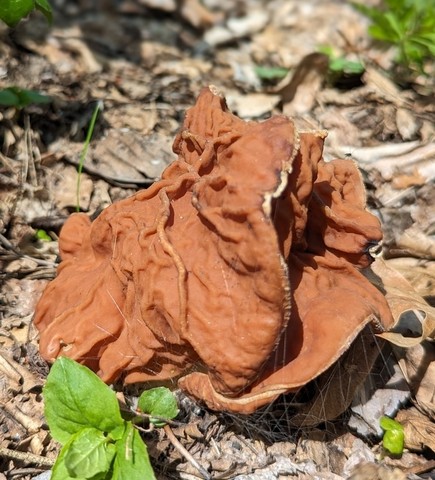
504
- Growing scattered on East-facing open oak/hickory woodland slope next to downed hardwood logs.
- Spore Print: whitish to light-buff.
References
Beug, M. (2024, April 23). Mushroom Poisoning Syndromes - North American Mycological Association. North American Mycological Association. https://namyco.org/interests/toxicology/mushroom-poisoning-syndromes/
Kuo, M. (2012, June). Gyromitra brunnea. Retrieved from the MushroomExpert.Com Web site: http://www.mushroomexpert.com/gyromitra_brunnea.html
Created October 14, 2025 at 3:03 PM
